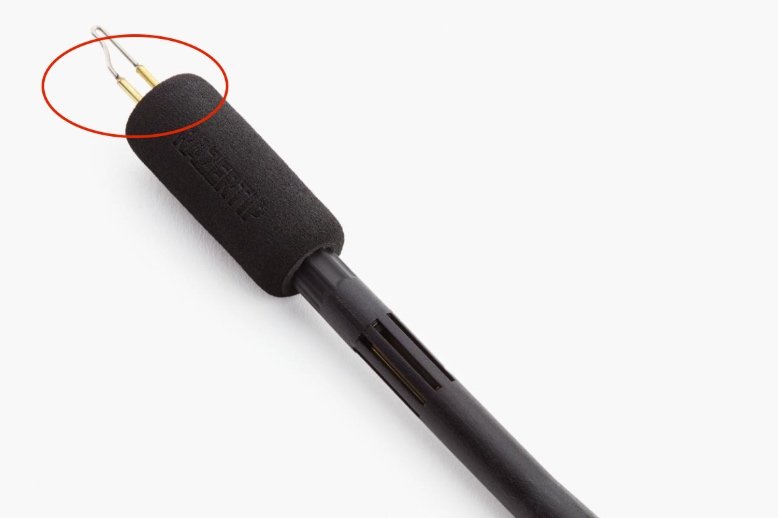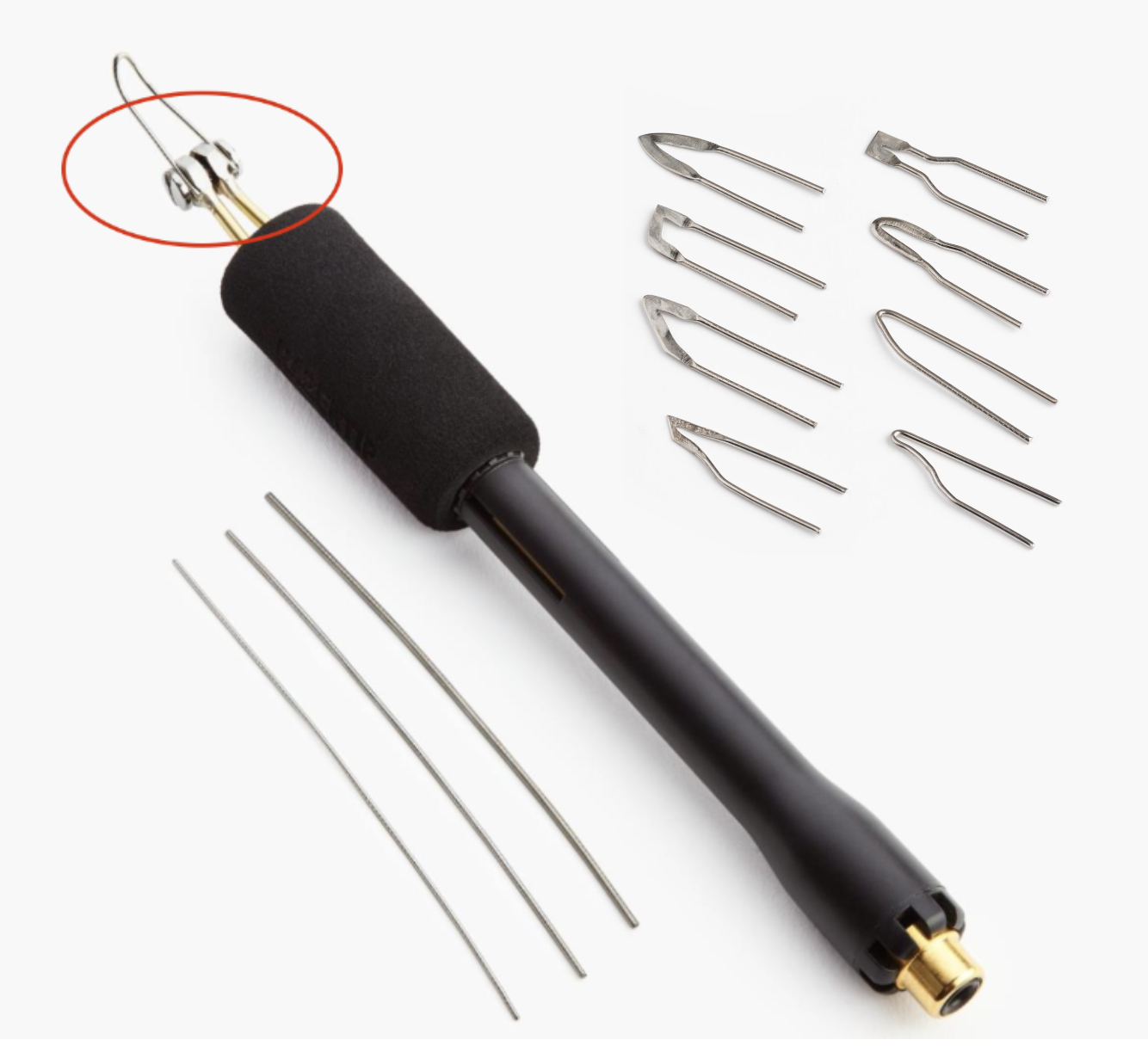The difference between a wire tip/nib burner and a solid tip/nib burner primarily lies in their design and functionality.
Each type has its own set of advantages and disadvantages.
But first, please remember: The tools we use are undeniably important, but at the end of the day, it’s all about the user and what works best for them. Many artists can create incredible work with the simplest, most affordable tools, showing that skill and creativity matter more than price. On the flip side, even the fanciest tools can feel frustrating if we are learning the craft.
The same goes for wire-tip versus solid-tip pyrography pens—both have their strengths, but the best choice is whatever feels right in your hands and helps you create with ease. In fact, deciding between a solid-tip and a wire-tip tool is a great starting point when choosing your burner, as the functionality between these two types often has a bigger impact on your experience than the differences between machines from different brands. So let’s get into these differences.
Wire Tip/nib Burner:
Design: Utilizes a closer-to-pen-like device with tips made of a looped wire or a wire nib. On some pens, these tips can be changed out, allowing for a wide variety of tip shapes and sizes (more on interchangeable nibs at the end). The pens are usually thinner and easier to hold, as the grip is located closer to the nib, allowing the pen to feel like an actual pen making it ideal for comfort, especially if you are burning for longer periods at a time.
Temperature Control: Wire tip burners typically offer more precise temperature control, which can be adjusted quickly. This allows for quicker and more detailed and varied shading techniques.
I have found that some pens with a thinner handle tend to overheat so be mindful of the company you choose (check out What Wood Burning Tool Is Right For Me to learn more about choosing a new tool).
Durability: Generally these pens are more delicate than a solid nib making them more susceptible to damage over time. Proper care and a lighter hand will help them last longer.
Learning Curve: Might have a slightly steeper learning curve due to the delicacy of the wire tips and the precision required in handling them.
Heat Up Time: Generally, wire tips heat up and cool down much more quickly than solid tips.
Solid Tip/Nib Burner:
Design: Features a pen-like device with a solid brass or copper tip. The tip variety is usually more limited compared to a wire nib, the pen is thicker and clunkier to hold and the grip is usually further away from the nib making it slightly more difficult to control, especially if burning for longer periods of time.
Temperature Control: Solid tip burners are usually less precise in temperature control compared to wire tip burners, and adjustments may take longer to affect the tip temperature. However, because they are thick and solid, they do retain the heat better than a wire tip, making them ideal for large projects that require a lot of dark burning.
Durability: Solid tips tend to be more durable than wire tips because they are less fragile and less susceptible to bending or breaking.
Learning Curve: For beginners, solid tip burners might be easier to start with due to their durability and less delicate handling requirements.
Heat Up Time: Solid tips generally take longer to heat up and cool down than wire tips, but, as stated earlier, they retain their hear better than a wire nib does.
Application:
Wire Tip Burners are usually preferred for detailed art, fine shading, and where quick temperature adjustment is necessary.
Solid Tip Burners are often used when learning the basics of pyrography due to cost and durability. The heat retention and covering large areas with shading is ideal with these style burners.
which one gets hotteR?
In terms of reaching a higher temperature, both types can be capable of very high temperatures suitable for pyrography. The key difference lies in how quickly they reach these temperatures and how precisely those temperatures can be controlled during the work.
Wire tip burners generally offer faster heat up times and more precise control, making it seem like they can get hotter faster, but in terms of maximum temperature capabilities, it's more about the specific company and its design rather than the tip type alone.
However, there are some general characteristics related to how each type manages and conducts heat that can influence their operating temperatures:
Wire Tip Burners are designed for precise control and can reach very high temperatures quickly due to their thin wire construction, which has less mass to heat. This design allows for rapid heat transfer and adjustment, making them suitable for intricate work that requires changing temperatures quickly for different effects.
Solid Tip Burners, on the other hand, have a larger mass in their tips, which means they take longer to reach the desired temperature. However, once heated, they can retain heat longer due to the larger thermal mass. The heat distribution over the solid tip is more uniform, which can be advantageous for certain types of shading and consistent line work.
Interchangeable nibs on wire tip burners:
Interchangeable nibs for wood burning tools allow artists to switch between different tip styles for various effects in their projects with only one pen. These nibs can range from fine points for detailed work to larger, flat tips for shading or transferring images.
Pros: Interchangeability offers flexibility and creativity, enabling users to achieve a wide range of textures and depths in their art without needing multiple tools. This versatility is particularly valuable for artists looking to explore different techniques or work on projects that require both detailed and broad work. It’s a good way to learn what you like using without spending loads of money.
Cons: Interchangeable nibs, while versatile, can have drawbacks such as requiring time to switch between nibs, which might interrupt the workflow. There's also a learning curve in mastering different nib types for optimal use. Additionally, the delicate nature of some wire nibs can lead to breakage if not handled with care. Exercise caution when tightening to ensure a complete connection, or your heating may not be even. High-quality interchangeable nibs might come with a higher initial cost, although they offer long-term flexibility and savings from not needing multiple dedicated tools.
In summary
Wire-tip tools are lightweight and heat up quickly, offering precision and flexibility for fine details and shading. Solid-tip tools are sturdier and retain heat longer, making them ideal for bold lines and consistent burning on tougher surfaces.
Choosing between them often comes down to personal preference and the type of project you’re working on.
When starting out, due to the low price point, we recommend a solid tip/nib burner (the Versa Tool from Walnut Hollow is our favorite). It gives you a fair chance to know if you will enjoy burning while keeping the price of starting this hobby at a minimum.
These are a good basic tool to have in your toolkit anyways, even if you upgrade to a wire tip. Some artists never even upgrade to another tool but at least you will have that option without breaking the bank.
If you plan on burning more often, want a faster heat-up time, more variety, a more comfortable grip, consider a wire tip burner. Check out What Wood Burning Tool Is Right For Me to learn more about choosing your new tool.



